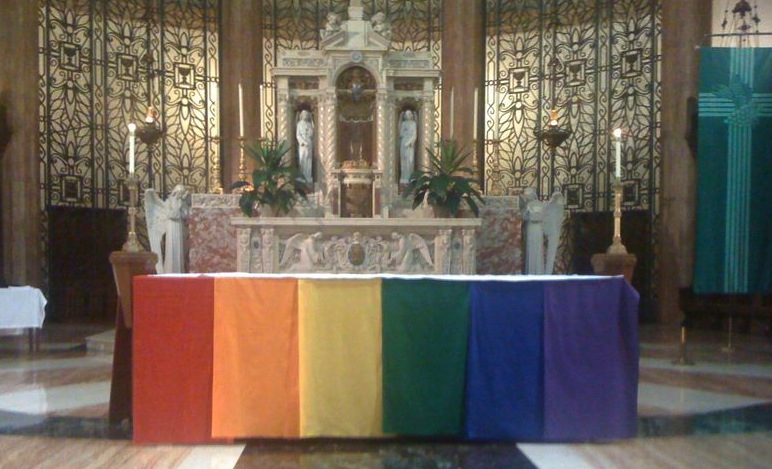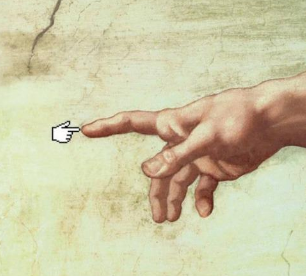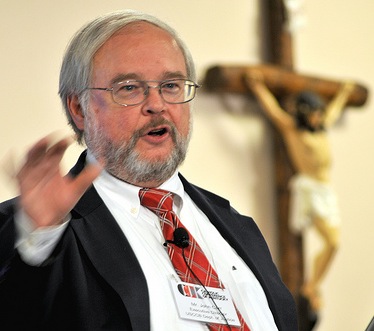What we have here is a totally predictable story, to an almost stunning degree. It’s almost a non-story, from the get go.
What has me confused, however, is whether or not The New York Times crew realizes that it is publishing a totally predictable story, a story in which there is not a single new or unpredictable element.
You see, there are quite a few signs in the story that the Times folks know that there is little or nothing new in this piece. Then, at other times, the world’s openly liberal newspaper of record — especially on religious and moral issues, saith former editor Bill Keller — seems to think that this story is important.
The key is the story’s Something Really Big Has Happened Lede, which only sounds big because the newspaper’s editors chose to omit a crucial fact.
More than 250 religious leaders in Illinois have signed an open letter in support of same-sex marriage, which the legislature is likely to take up in January.
“We dedicate our lives to fostering faith and compassion, and we work daily to promote justice and fairness for all,” the leaders wrote in the letter, which was released Sunday. “Standing on these beliefs, we think that it is morally just to grant equal opportunities and responsibilities to loving, committed same-sex couples.
“There can be no justification,” they continued, “for the law treating people differently on the basis of sexual orientation or gender identity.”
This is not the first time members of the clergy have endorsed same-sex marriage, but the public nature of the letter and the number of signatures made it an especially strong statement.
Now let me be clear: This is a story. Years ago, it would have been an important one.
What I am arguing is that at this point it is a totally predictable story, for reasons that — to their credit — the Times persons make little effort to hide. The story notes, for example that “many” of the Christian and Jewish leaders who signed this liberal statement noted that “they had long supported same-sex marriage.”
So what does the lede fail to mention? This story does not cite a single clergyperson who, by signing this statement, was changing her or his position on this issue. In fact, the story does not list a single clergyperson whose stance represents a violation of her or his denomination’s stance on the moral status of sex outside of marriage.
In other words: Where is the news?
By the way, I would feel precisely the same about a Times story reporting that a large flock of Catholic, Orthodox, Orthodox Jewish, Muslim, Mormon and evangelical Protestant clergy had produced a statement documenting their opposition to same-sex marriage. The difference, of course, is that the Times would not print that story and certainly would not open that alleged news report with a Something Really Big Has Happened Lede.
Note the denominations that are backing this liberal proclamation:
“It’s not a religious right — it’s a civil right,” said the Rev. Kevin E. Tindell, a United Church of Christ minister at New Dimensions Chicago. “It’s a matter of justice, and so as a Christian, as a citizen, I feel that it’s my duty.” Mr. Tindell, who is gay, is raising three children with his partner of 17 years.
The Rev. Kim L. Beckmann of the Evangelical Lutheran Church in America, who lives in the Chicago area, said she was drawn into the movement “as my gay and lesbian parishioners were welcomed into our congregation.”
“I have participated in blessings of these unions for longer than we’ve even been talking about marriage,” she said. “I’m thrilled to take this step.” …
The Rev. Kara Wagner Sherer of St. John’s Episcopal Church in Chicago said it was a way for religious leaders to say, “I’m a faithful Christian or a Jew or Muslim, and I think that marriage equality is important.”
“It doesn’t have to be a faith issue,” she said. “We understand our Scripture in a different way.”
Now, that quote from the female Episcopal priest raises an interesting question: Did any mainstream Muslim leaders actually sign this letter? Did any Muslims sign the letter, period?
The logical thing to do is to look online and fine the list. However, at the moment, all I can find is news reports about the letter, many of which — unlike the Times story — note another predictable element of this development, which is that most of the women and men who signed this statement are from the Chicago area.
I am several pages into a logical online search and I can’t find the actual list. Surely it is online? Or, perhaps, was the story in the Times meant to serve as the official announcement?
Help me find the list, please. Once we have found it, we can search the list for (a) Muslims, (b) Catholics who are not liberal nuns, (c) Orthodox Jews, (d) evangelical Protestants who are employed by major evangelical denominations, (e) Mormons linked to major Mormon organizations, (f) Anglicans who are not part of The Episcopal Church, etc., etc. In other words, let’s search the list for surprising names, the kinds of signatures that would represent a truly newsworthy development.
Again let me stress: We are talking about a journalism issue here, exactly the same journalism issue that would be raised, let’s say, by a Fox News report trumpeting an anti-gay-marriage statement released by a long list of religious leaders who are part of religious groups that support their various traditions’ ancient doctrines on sex and marriage. That statement wouldn’t be big news either.
UPDATE: Thank you to reader Joyce Garcia. Here’s the link to a .pdf of the list. The list is pretty much what I expected, including its reference to an “Orthodox” parish — a St. Thomas Mission that is actually part of a liberal splinter group. Check the list. Check it twice.













